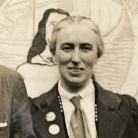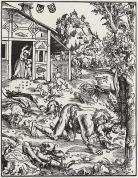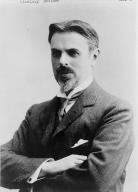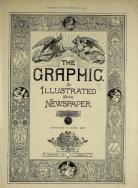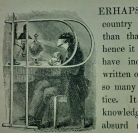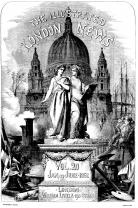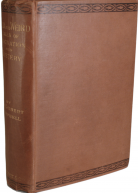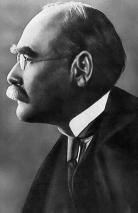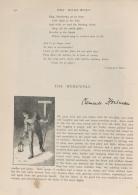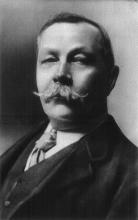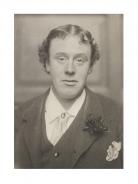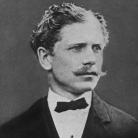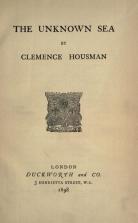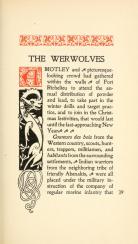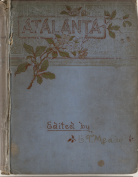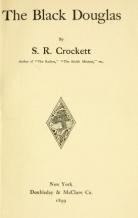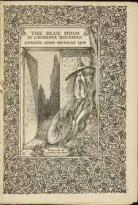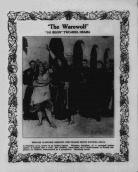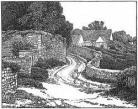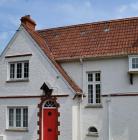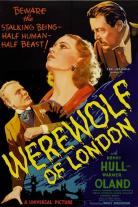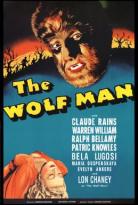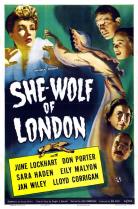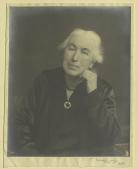Timeline for Clemence Housman's The Were-Wolf
Created by Lorraine Janzen Kooistra on Wed, 03/07/2018 - 13:18
Part of Group:
This timeline provides a chronology of events from 1839 to 1959 that are relevant to the production and reception history of Clemence Housman's The Were-Wolf.
Timeline
Chronological table
| Date | Event | Created by | Associated Places | |
|---|---|---|---|---|
| 1839 |
Frederick Marryat publishes "The Phantom Ship"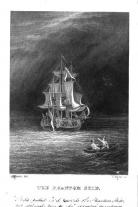 The frontispiece to Frederick Marryat's "The Phantom Ship." Originally serialized between 1838 and 1839. Published by Richard Bentley, London, 1847 edition. Wikimedia Commons. The Phantom Ship by Frederick Marryat is a gothic novel which was serialized in The New Monthly Magazine between 1838 and 1839. It was reprinted in 1839 in three volumes. The Phantom Ship was a popular text and would have been accessible to Clemence Housman prior to writing The Were-Wolf. The chapter titled “The White Wolf of the Hartz Mountains” shares some similarities to the characters and narratives of The Were-Wolf, such as a seductive female werewolf who stalks rural communities, where she murders members of her quarries’ families. Like Housman’s White Fell, Marryat's female werewolf also wears white attire and becomes part of her victims’ homes. |
Michael Seravalle | ||
| 1846 |
G. W. Reynolds publlishes "Wagner, the Wehr-Wolf"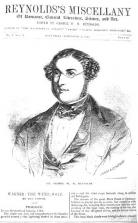 G. Reynolds on the first page of the first printing of Reynolds's Miscellany from 1846. The text of the first installment of "Wagner, the Wehr-Wolf" begins at the bottom of the page. Public Domain. Wagner, the Wehr-Wolf by George William MacArthur Reynolds is a gothic novel which was serialized in Reynolds Miscellany in 1846. This lycanthropy text features a marathon race and uses celestial terminology, referencing the stars, the sky, and midnight to mark the transformation of a human into a werewolf. Reynolds established midnight as the heightened moment for a werewolf's transformation. In his text, midnight is when the powers of the werewolf are at their peak, declining thereafter. These rules of the lycanthropy mythos appear throughout Clemence Housman’s The Were-Wolf.
|
Michael Seravalle | ||
| 5 Feb 1860 |
Birth of Everard Hopkins "Wolf Pack with Dead White Wolf," for Clemence Housman's The Were-Wolf in Atalanta Magazine (vol 4.39), illustrated by Everard Hopkins. The Were-Wolf Gallery. Everard Hopkins was born in Hampstead, London, on February 5, 1860, to Catherine Smith and Manley Hopkins. He was the youngest in a family of seven children, the eldest of whom was the famous Victorian poet and Jesuit priest, Gerard Manley Hopkins (1844-1889). Another elder brother, Arthur Hopkins (1848-1930), was a well-known artist. Hopkins attended the Charterhouse School and completed his post-secondary education at the Slade School of Fine Arts in London (1878). After completing his education, Hopkins became the Assistant Editor of Pilot. He also worked as an illustrator for various magazines, including Atalanta, for which he illustrated Clemence Housman’s The Were-Wolf (1890). Other magazines included Woman’s World, The Graphic (for which he drew for wood engravings from 1883-1885), Illustrated London News (1887-1892), Quiver (1890), Black and White (1891), and Punch (1882-1895) (McDermott, A Hopkins Chronology; Engen, Dictionary of Victorian Wood Engravers). Hopkins also illustrated books; examples includeLaurence Sterne’s A Sentimental Journey Through France and Italy (1910), L.T. Meade’s The Children of Wilton Chase (1911), and Alfred Lord Tennyson’s The Princess (1911) . |
Hadia Khan | ||
| 23 Nov 1861 |
Birth of Clemence Annie HousmanClemence Annie Housman was born in Bromsgrove, England, on November 23, 1861. Saint Clement’s Day in the liturgical calendar marks the traditional beginning of winter. Housman was the third child and oldest girl in a family of seven children, the eldest of whom was A.E. Housman (1859-1936), the poet. Clemence was very close to the second youngest of her siblings, Laurence Housman (1865-1959), with whom she lived and worked her entire life. In addition to writing novels, Houseman was a wood engraver and an activist in the feminist movement for female suffrage. (Oakley, Inseparable Siblings)
|
Lorraine Janzen Kooistra | ||
| 1865 |
S. Baring-Gould publishes “The Book of Were-Wolves”The Book of Were-Wolves by the Reverend Sabine Baring-Gould is a collection of werewolf folklore and mythology originally published in 1865 by Smith, Elder & Co. The text investigates the various mentions of werewolves from “ancient writers of classic antiquity,” “Northern Sagas,” and “mediæval authors,” to create a “sketch of modern folklore relating to Lycanthropy” (Baring-Gould 6). Born in 1834 in Devon, England, Baring-Gould was a theologian, hagiographer, novelist, linguist, and collector of folk songs, as well as a composer of hymns, his most famous being “Onward Christian Soldiers.” He was ordained as an Anglican Priest in 1865. Baring-Gould’s uniquely diverse talents are represented in The Book of Were-Wolves, as various chapters pull from oral traditional tales, folk songs, historical accounts, and medical documentation that link lycanthropy to the real world. Baring-Gould attempts to associate lycanthropy with cannibalism, spiritual possession, and madness to reveal “that under the veil of mythology lies a solid reality, that a floating superstition holds in solution a positive truth” (Baring-Gould 6). This text would have been an excellent reference for Clemence Housman when writing The Were-Wolf. |
Michael Seravalle | ||
| 18 Jul 1865 |
Birth of Laurence HousmanLaurence Housman was born on July 18, 1865 in Bromsgrove, England, the sixth of Edward and Sarah Jane Williams Housman's seven children. He was exceptionally close with his older sister Clemence Housman (1861-1955). Their eldest sibling was the poet and classical scholar A.E. Housman (1859-1936). Laurence attended art school— primarily book arts— in London with Clemence, who mastered wood engraving. His exceptional version of Christina Rossetti's Goblin Market (1893) led to his involvement at The Bodley Head, where he designed and illustrated many books of poetry and fiction. Here, he also collaborated with Clemence, making illustrations which she would then engrave, including those for her story,The Were-Wolf, published in1896. By 1900, declining eyesight ended his illustration career, but he was also a prolific and controversial playwright. Laurence Housman lived as an outspoken suffragist, pacifist, socialist, and homosexual advocate for sexual tolerance and freedom (Oakley, Inseparable Siblings). |
Hayley Horvath | ||
| 4 Dec 1869 to 1932 |
Launch of The GraphicAn illustrated weekly paper known for its social realism and the high-quality of its illustrations, The Graphic was one of the periodicals that Clemence and Laurence Housman pored over as children in their country home in Bromsgrove. Laurence recalled that The Graphic stimulated the siblings’ interest in the outside world and its issues (Unexpected Years). Later, working as a professional reproductive wood engraver in London, Clemence Housman engraved woodblocks for The Graphic from approximately 1885-1895. |
Lorraine Janzen Kooistra | ||
| 1883 |
Clemence and Laurence Housman go to London to study artWhile Laurence focused on drawing, Clemence Housman studied wood engraving at Miller’s Lane City and Guilds School in South Lambeth. Clemence learned engraving in a segregated classroom for women taught by Charles Roberts, a skilled engraver; Roberts also taught the craft to Charles Ricketts, Charles Shannon, and T. Sturge Moore in a class for male students. It was while she was a student that Clemence invented the story of The Were-Wolf, telling it to the women in her wood-engraving class to entertain them while they worked. |
Lorraine Janzen Kooistra | ||
| 1885 |
Clemence Housman begins wood engraving careerIn 1885, after two years of training, Clemence Housman joined the Chancery Lane engraving firm of her teacher, Charles Roberts, and began her career in reproductive wood engraving. For approximately ten years, Clemence engraved numerous woodblocks for periodicals such as the Illustrated London News and the Graphic, all unsigned, or signed only with name of the firm. “By industry and ability,” Laurence Housman wrote, “my sister was passed on to the engraving office as a proficient wood-engraver in extra quick time” (“Materials and Notes”). |
Lorraine Janzen Kooistra | ||
| 1887 |
Clemence Housman publishes "Wood Engraving as an Occupation for Women"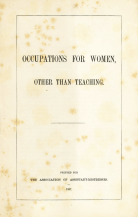 Occupations for Women Other Than Teaching, 1887, Mark Samuels Lasner Collection, University of Delaware Library A few years into her career, Clemence Housman published an essay promoting wood engraving in a pamphlet on Occupations for Women, Other Than Teaching. The Association of Assistant Mistresses, which was formed in 1884 to support women’s rights to education, employment, and fair treatment, printed and distributed the pamphlet. Housman advised that wood engraving was not appropriate for women looking for short-term work, “but one proposing to continue it for a lifetime, will find its value and pleasures increase year after year.” Although the essay is unsigned, authorship has been attributed to Clemence Housman. (Pamphlet in Mark Samuels Lasner Collection, University of Delaware Library) |
Lorraine Janzen Kooistra | ||
| Oct 1887 |
Launch of Atalanta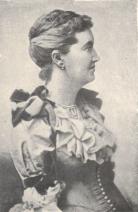 L.T. Meade (1844-1914). Author and first editor of Atalanta. Credits: Project Gutenberg. http://www.gutenberg.org/files/23653/23653-h/images/meade.jpg Under the editorship of L.T. Meade and Alicia A. Leith, Atalanta was a monthly girls' periodical magazine containing fiction, literary essays, and articles related to girls' issues. Atalanta's first publishing company was Hatchards (1887-1890). Other publishing companies Trischler and Co. (1890-1892), Marshall Bros (1892-1896), and Marshall Russel and Co. Ltd. (1896-1898) published later editions. L.T. Meade was among the writers in early issues, along with Frances Hodgson Burnett, H. Rider Haggard, Grant Allen, Amy Levy, John Strange Winter, and Walter Besant. In the fiction section, Atalanta offered both serialized and short stories, focusing on domestic dramas such as Mrs. Molesworth's "Neighbours" (October 1887-March 1888), and adventures such as H.E. Hamilton King's A Tale of Three Lions (October-December 1887). In the literary articles section, early publications featured Anne Thackeray on Jane Austen, Mary Ward on E.B. Browning, Charlotte Yonge on John Keble, Andrew Lang on Walter Scott. Poems were also featured in this magazine, across various themes such as sentimental, seasonal, religious, and historical subjects. |
Erni Suparti | ||
| 10 Oct 1887 |
Launch of The Bodley Head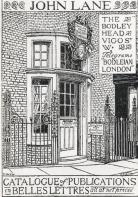 Cover Image for John Lane’s 1896 Catalogue of Publications in Belles Lettres. Yellow Nineties Online (www.1890s.ca) The Bodley Head was originally established in 1887 under the partnership of Charles Elkin Mathews (1851-1921) and John Lane (1854–1925) as a bookshop specializing in old and rare books. The bookshop opened in London under a sign depicting the head of Sir Thomas Bodley, an English diplomat and scholar who founded the Bodleian Library in Oxford. Mathews had a passion for antique books and opened a small bookshop of his own in Exeter in 1884. Lane, on the other hand, educated himself in book collecting while living in London and supporting himself for years as a clerk at the Railway Clearing House. Their shared interest in book collecting brought them together and an ambitious Lane persuaded a hesitant Mathews to enter into a partnership with him. Lane not only convinced Mathews to move his books from Exeter to London, but also located a site for what would become The Bodley Head on Vigo Street. They called their catalogue of merchandise “A List of Books in Belles Lettres,” and focused on embodying the aestheticism of the period by specializing in decorated limited edition works of literature. (Stetz and Lasner, England in the 1890s: Literary Publishing at the Bodley Head) |
Harpreet Kaur Natt | ||
| 1889 |
Gilbert Campbell publishes "The White Wolf of Kostopchin"In 1889, Ward Lock & Co. published Sir Gilbert Campbell's "The White Wolf of Kostopchin" in Wild and Weird: Tales of Imagination and Mystery. The short story takes place in a Lithuanian village on the estate of Paul Sergevitch, where several people have been killed by a white she-wolf. These attacks coincide with the appearance of beautiful young woman named Ravina, with whom Sergevitch is in love. The Were-Wolf and Campbell's text have some similarities. For example, both stories features a female werewolf in white fur clothing, who attempts to seduce and kill an unsuspecting man. However, there are no Christian elements in Campbell's story. While The Were-Wolf's antagonist White Fell is threatened by a crucifix, Ravina is killed by an ordinary bullet (Campbell, "The White Wolf of Kostopchin;" Frost, Essential Guide to Werewolf Literature). |
Mary Ann Matias | ||
| 12 Jul 1890 |
Rudyard Kipling publishes "The Mark of the Beast"On July 12, 1890, the Pioneer published Rudyard Kipling's "The Mark of the Beast." In India, an Englishman, Fleete, is cursed by the bite of a leper priest after he desecrates a Hindu temple. The short story describes his transformation from a man into a wolf-like creature. Kipling's text diverts from some familiar conventions of nineteenth-century werewolf fiction. Clemence Housman's The Were-Wolf and other werewolf stories often focused on werewolves as predatory villains, and usually had this threat occur in a village or town. In this story, Fleete does not kill anyone, nor is he killed at the end. Instead, he is presented as a victim that his colleagues must save (Du Coudray, The Curse of the Werewolf; Kipling, "The Mark of the Beast"). |
Mary Ann Matias | ||
| Oct 1890 to Sep 1891 |
Clemence Housman publishes "The Were-Wolf" in Atalanta: A Magazine for GirlsEditor L.T. Meade published Clemence Housman's The Were-Wolf in the December 1890 Christmas number of Atalanta (volume four, pages 132-156). The version of The Were-Wolf in this magazine has four full-page illustrations, one historiated initial letter, and one inset illustration. It also varies in typography and diction from the 1896 Bodley Head edition. in Atalanta, The Were-Wolf was illustrated by Everard Hopkins, who created wash drawings reproduced by halftone engravings. |
Erni Suparti | ||
| 21 Dec 1890 |
Arthur Conan Doyle publishes "A Pastoral Horror"On December 21, 1890, People published Sir Arthur Conan Doyle's short story, "A Pastoral Horror." Taking place in the village of Laden in Bavaria, the story is about a masked man who commits a series of murders with a pickaxe. The identity of the killer is revealed to be the village's parish priest, Father Verhagen, who is committed to an asylum. Doyle's story is a rare example of nineteenth-century werewolf fiction that does not include supernatural elements. Verhagen does not transform into a wolf, as Clemence Housman's White Fell does in the The Were-Wolf. Instead, he remains human, but is driven to wolf-like madness by a disease (Doyle, "A Pastoral Horror;" Pugh, The Life of Arthur Conan Doyle). |
Mary Ann Matias | ||
| Jun 1893 |
Count Eric Stenbock publishes "The Other Side: A Breton Legend"In June 1893, The Spirit Lamp published Count Eric Stenbock's "The Other Side: A Breton Legend." This short story is set in an unnamed village near a werewolf-inhabited forest. A young man, Gabriel, is lured to this forest by a wolf-woman named Lilith, who turns him into a werewolf. Stenbock's story is the only other example of werewolf fiction in the 1890s to include the idea of a dangerous kiss. However, Stenbock's Lilith, unlike The Were-Wolf 's White Fell, does not use the kiss as a hunting marker. Gabriel lives, and is instead cursed by the wolf-woman's kiss to transform into a monster for nine days a year (Stenbock, "The Other Side;" Zigarovich, TransGothic). |
Mary Ann Matias | ||
| Sep 1894 |
End of Bodley Head Partnership Between John Lane and Charles Elkin Mathews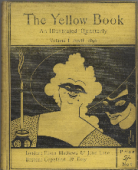 Front Cover of Volume 1 (April 1894) of Bodley Head's "The Yellow Book." Yellow Nineties Online (www.1890s.ca) Charles Elkin Mathews and John Lane ended their business partnership due to a clash of personalities and philosophical differences. Lane pushed The Bodley Head beyond antiquarian bookselling and into larger scale publishing and in-house production work. He recognized and wanted to serve the needs of not only middle and upper-middle class readers, but also of the new lower middle-class readers created by the Education Act of 1870 — readers who were opinionated and adventurous, and interested in equality, social reform, and politics. Mathews’ main interests, however, continued to be poetry and essays for the upper-class and educated, so he had a hard time adjusting to the court controversies, publicity, and mass-market sales that resulted from The Bodley Head’s publications catering to new lower middle-class readers. Tensions reached a critical point when The Bodley Head began publishing The Yellow Book (1894-1897), a controversial avant-garde illustrated periodical. Just a couple of months following the publication of the first volume in 1894, Mathews and Lane ended their partnership. Lane kept the innovative and modern aspects of The Bodley Head, along with The Bodley Head premises and name, while Mathews took many of The Bodley Head poets with him to a publishing firm bearing his own name. (Nelson, The Early Nineties: A View from the Bodley Head). Laurence Housman published "The Reflected Faun" in The Yellow Book volume 1 (July 1894) and thereafter began working as a book designer and illustrator for The Bodley Head (The Yellow Nineties Online). |
Harpreet Kaur Natt | ||
| circa. 1895 |
Wood Engraving Industry Replaced by Photomechanical ProcessesHalftone engraving for tonal images was introduced in illustrated papers and magazines in the late 1880s; Everard Hopkins’s wash drawings for “The Were-Wolf” in Atalanta were reproduced using this technology. By the mid 1890s, line block engraving had largely replaced wood engraving as the standard reproduction technology for linear black-and-white art. All the illustrations in The Yellow Book (1894-1897), for example, were reproduced by this process. As Charles Booth wrote in Life and Labour of the People in London (1902-4): “No other occupation has suffered more than [wood]engraving from the competition of new inventions and the change from ancient to modern methods” (112). Wood engraving firms went bankrupt, and wood engravers lost employment. When Clemence Housman lost her job with Charles Roberts’ firm, she was owed a hundred pounds in wages (L. Housman, “Materials and Notes”). However, thanks to her exceptional skill and her brother Laurence Housman's connections with the Book Beautiful movement, Clemence was able to find work as a wood engraver for publishers of fine books such as The Bodley Head, where Laurence worked as a book designer, and private presses, such as the Essex House and Pear Tree presses. |
Lorraine Janzen Kooistra | ||
| 1896 |
A.E., Clemence, and Laurence Housman publish books in same year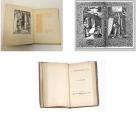 Top left: The frontispiece and title page of The Were-Wolf. Top right: The decorative title page and inside cover of Green Arras. Bottom centre: The undecorated title page of A Shropshire Lad. Images found on Google Image. The Were-Wolf by Clemence Housman Green Arras by Laurence Housman A Shropshire Lad by A.E. Housman |
Danielle DiFruscia | ||
| Jan 1896 |
Clemence Housman publishes "The Were-Wolf" with The Bodley Head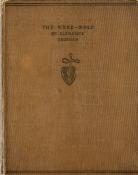 Front Cover of "The Were-Wolf" Designed by Laurence Housman for 1896 Bodley Head Edition. Ryerson University Special Collections Clemence Housman’s The Were-Wolf was published in book form by The Bodley Head in January of 1896. This publication allowed Housman’s story to reach audiences that it hadn’t through its 1890 publication in the Christmas number of Atalanta magazine, a periodical for young girls. The Bodley Head introduced The Were-Wolf to New Women, aesthetes, and other book lovers who bought and appreciated John Lane’s selection of books in “belles lettres.” It was Clemence’s younger brother, Laurence Housman, who initially gave her access to The Bodley Head, as he worked for the publisher as a book designer and illustrator. Clemence’s wood engravings for The Were-Wolf, which The Bodley Head published along with her story, were after Laurence’s drawings (Kooistra, “Clemence Housman’s The Were-Wolf: Querying Transgression, Seeking Trans/Formation”). The edition was well-received by critics, with one reviewer describing it as “half fairy tale, half allegory, and displaying qualities of imagination and invention that are hard to seek in any other recent book of the kind that I have come across” (“Our Monthly Parcel” 92). |
Harpreet Kaur Natt | ||
| 17 Oct 1897 |
Ambrose Bierce publishes "The Eyes of the Panther"On October 17, 1897, The San Francisco Examiner published Ambrose Bierce's "The Eyes of the Panther." In this short story, a woman named Irene Marlowe explains to her suitor that she was born shortly after her mother's traumatizing encounter with a panther. When the suitor is attacked a few nights later by a similar panther, he discovers after killing the beast that it was really Irene. Although considered a part of nineteenth century werewolf fiction, Bierce's story is a unique variant. Instead of a traditional werewolf, this text features a woman that can transform into a panther. A notable contrast to The Were-Wolf's antagonist White Fell is that Irene does not remain an animal upon her death. Instead, she reverts to her human form (Bierce, "The Eyes of the Panther;" Bierce, A Sole Survivor). |
Mary Ann Matias | ||
| 1898 |
Laurence Housman publishes The Field of Clover, Engraved by Clemence Housman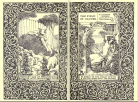 Double-page frontispiece to the volume, published by Paul, Trench, and Trübner, London, 1898 edition. Archive.org. The Field of Clover by Laurence Housman, with engravings by Clemence Housman, was published in London by Paul, Trench, and Trübner. The dedication reads “TO MY DEAR WOOD-ENGRAVER,” referring to Clemence. Laurence Housman did not dedicate all of his works. The dedication is indicative of the bond between the two siblings and shows by its choice of epithet Laurence's high regard for Clemence's skill as an engraver. The book is a collection of fairy tales: “The Bound Princess” (a longer work in six parts), “The Crown’s Warranty,” “The Wishing Pot,” “The Feeding of the Emigrants,” and “The Passionate Puppets.” Like The Were-Wolf, The Field of Clover is a collaboration between Laurence and Clemence Housman. Laurence wrote the text and drew the original illustrations, which were then engraved by Clemence. Also similar to The Were-Wolf, the subject matter of the book demonstrates the Victorian fascination with the supernatural and themes of transformation. Women recite spells to turn into flowers; a great worm drinks a boy’s breath through a magical ring. The language is rich and vivid, and the stories themselves often impart moral lessons. The Field of Clover, along with several of Laurence Housman's other works, was collected into a larger volume called Moonshine & Clover by the New York printers Harcourt, Brace, & Company, in 1922. |
Emily C. Fleming | ||
| 1898 |
Laurence Housman publishes The Story of The Seven Young Goslings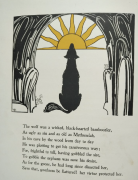 The Story of the Seven Young Goslings by Laurence Housman, illustrated by Mabel Dearmer. Private Collection. In 1898 Laurence Housman made his own contribution to lupine literature with a light-hearted versification of the Grimm Brothers’ fairy tale about the trickster wolf and the seven goslings: “The wolf was a wicked, black-hearted bamboozler, /As ugly as sin and as old as Methuselah.” The book was beautifully illustrated by his friend Mabel Dearmer and published by Blackie & Son. |
Lorraine Janzen Kooistra | ||
| 1898 |
Clemence Housman publishes The Unknown SeaIn 1898, Duckworth published Clemence Housman's second novel, The Unknown Sea. This story relates the love affair between a man named Christian and a cruel mermaid, Diadyomene. Many of the themes present in The Were-Wolf reoccur here; although the antagonist cannot transform like The Were-Wolf's White Fell she is a half-human, half-animal creature whose goal is to seduce and kill a man. Kisses are also associated with death in this text, with Diadyomene kissing Christian after she kills him. In addition, the protagonist shares his name with Christian in The Were-Wolf, and it is similarly used for religious allusions. Here, Christian's martyrdom is represented in his self-sacrifice to save Diadyomene's soul and redeem her (Housman, Unknown Sea; Sutherland, The Longman Companion). |
Mary Ann Matias | ||
| circa. 1898 |
Charles R. Ashbee founds Essex House Press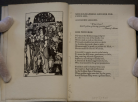 A wood engraving by Clemence Housman after Reginald Savage's design for Essex House Press. Queen's University Virtual Library. Inspired by William Morris and the fine printing revival, Charles R. Ashbee founded the Essex House Press in 1898. Clemence Housman engraved numerous illustrations for this firm.
|
Lorraine Janzen Kooistra | ||
| Aug 1898 |
Honoré Beaugrand publishes "The Werwolves"Honoré Beaugrand (1848-1906) was a French-Canadian writer, journalist, folklorist, and politician, remembered for his folk stories about nineteenth-century Québec. Beaugrand’s “The Werwolves” first appeared in The Century in August 1898, and was also collected in 1900 with two other stories for his book La chasse galerie, and other Canadian stories. "The Werwolves" borrows from the mythology of the Indigenous Peoples of Canada and French-Canadian folklore. The story remains a source of inspiration less for other werewolf novels, and more for werewolf films (such as 1913’s The Werewolf). Beaugrand wasn't the only one that saw the potential of werewolves in the Canadian cold: Clemence Housman believed that a film version of her werewolf story could easily take place in either Scandinavia or Québec (Housman "Script," Bryn Mawr Special Collections). |
Soraya Gallant | ||
| Sep 1898 |
Closure of AtalantaUnder the editorship of A. Balfour Symington and Edwin Oliver, Atalanta maintained its educational concept and incorporated Symington's Lady Victorian Magazine (1891-1892) into it. However, the number of elaborate illustrations that surrounded many of the stories and poems began to decrease after L.T. Meade's departure as editor in 1891, possibly due to increasing publication and printing costs. The amalgamation of Atalanta and Victorian Magazine seemed to be the reason behind L.T. Meade's departure. However, she conceded in the celebrity interview in 1892 that Atalanta took up plenty of her time. She left Atalanta completely in 1893. Atalanta changed its cover design in 1894 and Edwin Oliver edited the last two volumes which featured fewer distinguished writers than was customary for the publication. Atalanta shut down completely in September 1898. |
Erni Suparti | ||
| 1899 |
S.R. Crockett publishes The Black DouglasIn 1899, Doubleday & McClure Company published S. R. Crockett's novel, The Black Douglas. Taking place in the fifteenth century, it chronicles the battle between the Douglas Clan and the necromancer Gilles de Retz. After kidnapping William, Earle of Douglas's sister, de Retz plans to sacrifice her at his Black Mass. This story includes a female werewolf in the form of de Retz's companion, a witch-woman called La Meffraye, who has the ability to shapeshift into a large wolf. In contrast to The Were-Wolf's White Fell, La Meffraye does not disguise herself as a beautiful young woman. She instead alternates between her wolf form, and that of an old crone. Another notable difference in Crockett's text is that it does not feature a singular werewolf. Rather, La Meffraye controls a pack of them (Crockett, Black Douglas; Frost, Essential Guide to the Werewolf). |
Mary Ann Matias | ||
| circa. 1899 |
James J. Guthrie Founds the Pear Tree Press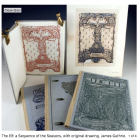 Display of five covers for Elf Magazine, published by The Pear Tree Press. Bromer Booksellers Online Inspired by William Blake and William Morris, James J. Guthrie founded The Pear Tree Press in 1899, so that he could take production into his own hands. Clemence Housman engraved numerous illustrations for Pear Tree Press books. Placing Housman's work within "that tradition which runs through Blake and the Pre-Raphaelites," Guthrie observed in 1924 that "in technical range, no engraver has carried the art further." Her “graver release[d] from the wood whatever fine-spun, fantastic subject there may be set, apparently without effort” (“Wood Engravings of Clemence Housman”). Sixty years later, printmaker Leonard Baskin likewise hailed Clemence Housman's unique skill as an engraver, noting "that the special and entrancing qualities of The Pear Tree Press illustrations are in large measure due to Clemence's sensitive and capable hand transferring Guthrie's designs into compelling works of fine art" ("Portrait of Clemence Housman"). |
Lorraine Janzen Kooistra | ||
| 1900 |
Laurence Housman publishes An Englishwoman's Love-LettersLaurence Housman first published An Englishwoman's Love-Letters in 1900 as an anonymous epistolary novel of the personal letters of an ill-fated couple. It was made available in a cream vellum jacket with gold embossing on the spine and two green silk ties to heighten its impression of intimacy. Its success spawned many differently bound copies and a parody, entitled Another Englishwoman's Love-Letters (1901) by Barry Pain. Intrigue over authenticity and theories of the couple's identities abounded until it was revealed Laurence was the sole author of the letters. The financial success of the novel encouraged Laurence's path into playwriting, where its concise and dramatic tone may also have proved an asset (Oakley, Inseparable Siblings). |
Hayley Horvath | ||
| 1904 |
Laurence Housman publishes The Blue Moon, Engraved by Clemence HousmanThe Blue Moon is the last collection of fairy tales on which Laurence Housman and his sister Clemence Housman collaborated. Laurence wrote and illustrated the tales, and Clemence engraved the images. “As proof of the extraordinary minuteness and accuracy of her engraving,’ Laurence recorded in his memoirs, “I would instance her illustrations to my book of fairy-tales called The Blue Moon” (“Materials and Notes”). |
Lorraine Janzen Kooistra | ||
| Sep 1905 |
Clemence Housman publishes The Life of Sir Aglovale de Galis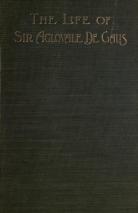 The first cover of the novel, published by Meuthen Publishing Limited in 1905. Image courtesy of The University of California via https://archive.org/details/lifeofsiragloval00housiala In her third and final novel, Clemence Housman offers a modern take on Arthurania with her adaptation of the life of Sir Aglovale de Galis, the eldest son of King Pellinore and a Knight of the Round Table (Reynolds 208). Housman draws from Sir Thomas Malory’s collection of Arthurian tales, Le Morte d’Arthur, using her artistic license to fill in the gaps Malory leaves in Aglovale’s life (Reynolds 208). Like The Were-Wolf, Housman uses Christian allegory and a balance between sin and virtue as a thematic background to her narrative. The novel’s front matter contains a segment of the eleventh chapter of the Theologia Germanica, an anonymous Christian treatise discovered by Martin Luther in the sixteenth century (Newman 658-9). The excerpt describes man’s despair at how far he has fallen from God’s grace. Because he desires nothing more than the Eternal Good, he is granted access to the kingdom of heaven. This passage is an appropriate preface to Aglovale’s journey; the knight, while sinful, unfailingly admits to his faults. Aglovale is ultimately imprisoned, but his honesty earns him a sense of moral redemption. Detaching herself from the narrative style of her previous novels, The Were-Wolf and The Unknown Sea, Housman adopts Malory’s archaic prose, prompting some negative reviews from the few critics to analyze Aglovale de Galis (Kleis 120). Others, like longtime friend of the Housmans Reginald Reynolds, called it “the most amazing book [he’d] ever read” (208). In spite of this, Aglovale de Galis struggled to gain traction in the literary realm. Like The Were-Wolf, Aglovale de Galis was reissued under several different publishers, starting with Meuthen Publishing Ltd. in London in 1905. Prodded by Laurence Housman, Clemence’s novel was reprinted under independent publisher Jonathan Cape a year before her death in 1954 (Reynolds 208). Clemence dedicated the novel to her brother Robert Holden Housman, who died in May of 1905, four months before Aglovale de Galis was first published in September of that year. The inscription reads: “Thanks be to God for my good brother, who has blessed this life of mine.” The Life of Sir Aglovale de Galis lies is a final testament to Clemence's careful and suspenseful prose. |
Emily Proulx | ||
| 11 Sep 1905 |
Launch of the Times Book Club Times Book Club label from Oxford Street found in The Were-Wolf, inside back cover of copy-text source The source-text for the COVE edition of Clemence Housman's The Were-Wolf (Bodley Head, 1896) is located in Ryerson University's Special Collections. This copy of the book includes some notable traces of its provenance. A label pasted into the inside back cover reveals that this book once belonged to a member of the Times Book Club, located at 376–384 Oxford Street in London, England. This is a rare example of archival evidence of a Victorian book club. The brainchild of The Times newspaper's managing director, Charles Frederic Moberly Bell, and advertising manager, Horace Everett Hooper, the Times Book Club opened on September 11, 1905. The book club was designed to increase circulation for The Times newspaper by enticing subscribers with access to a wide selection of books that could be borrowed for free or bought at a signficant discount. Although lending libraries were common throughout Britain, the Times Book Club was the first to lend books for free. Managed by Janet Hogarth (1865–1954), the book club scheme earned money for The Times through the increased number of advertisements brought in by the additional subscribers. The Times Book Club garnered positive public reception but was less well-received by publishers, who quickly realized the negative implications for their industry. Shortly after the book club opened, an official complaint was filed by the Publishers' Association to the Booksellers' Association. After outgrowing its original premises, the Times Book Club moved to Oxford Street and promoted their new location by advertising a massive book sale on May 1, 1906. The advertisement directly addressed what had now become a "book war," with The Times encouraging readers to end "The Vicious Circle" of high book prices (Boyles 195). At a meeting on July 4, 1906, the Publishers' Association decided to boycott The Times, withdrawing all advertisements. Subsequently, many publishers blacklisted the Times Book Club. The TImes responded by sourcing their inventory from elsewhere, and publishing articles about price-fixing in the book industry. The book war culminated with the Publishers' Association bringing Hooper to trial, beginning May 5, 1908. He lost the case, and shortly thereafter The Times hired a new manager for the book club, a new advertising manager, and a new circulation director. The Times Book Club then dwindled into obsolescence. |
Kate Womby Browne | ||
| circa. 1907 |
E. K. Muspratt obtains The Were-Wolf through the Times Book ClubThe source-text for the COVE edition of Clemence Housman's The Were-Wolf (Bodley Head, 1896) is located in Ryerson University's Special Collections. This copy of the book includes some interesting traces of its provenance. A label pasted into the inside front cover reveals that this book once belonged to E. K. Muspratt, Esq., who was presumably a member of the Times Book Club. Edmund Knowles Muspratt was born in Seaforth, near Liverpool, England on November 6, 1833 and died September 1, 1923. He was a prominent chemical industrialist and the youngest son of James Muspratt, "the father of the Alkali industry in Lancashire" (Muspratt 3). E. K. Muspratt had a PhD in medicine from the University of Munich and was involved in his father's alkali factory business, operating chemical plants and eventually becoming director and later president of the United Alkali Company. Muspratt fought in court for environmentally-responsible methods of making alkali, and was also a member of the Financial Reform Association where he advocated for free trade. In 1907, the University of Liverpool presented Muspratt with an honorary law degree of LL.D. Given that "Esq." follows Muspratt's name in the book owner label, and that the book also includes a Times Book Club (1905–1908) label, he must have owned our source copy-text of The Were-Wolf circa 1907. The label includes the address 5, Victoria Terrace, Beaumaris. Given its location in Wales, this may have been a summer home for the Muspratt family. Muspratt published his memoir, My Life and Work, in 1917 with John Lane, co-founder of The Bodley Head and publisher of The Were-Wolf (1896). |
Kate Womby Browne | ||
| 1909 |
Clemence and Laurence Housman found the Suffrage Atelier "What a woman may be, and yet not have the vote". This banner was produced at the Suffrage Atelier in 1912. Wikimedia Commons. Following the formation of the Artists' Suffrage League, founded by renowned stained glass artist, Mary Lowndes, in 1907, which produced illustrated banners, postcards, and pamphlets used to promote the campaign for women's enfranchisement in Britain and North America, Clemence and Laurence Housman established their own Suffrage Atelier in 1909. Its practices took place at artists' homes, before the Housman siblings offered the site of their small home, Pembroke Cottage in Kensington, as its headquarters. Though the location of its headquarters would change three more times within its five operational years, the collective vision of the Atelier remained the same: it was to act as an arts and crafts society which worked towards the enfranchisement of women, with an additional effort to encourage artists to forward the women's movement by means of pictorial publications. (VADS, "The Women's Library: Suffrage Banners") In contrast with its predecessor, the Artists' Suffrage League, the Housmans' Suffrage Atelier encouraged non-professional visual artists and enthusiasts to submit their work to the cause in addition to professional artists, and also offered a small percentage of the sold works' profits as compensation. The Atelier also contrasted with its associates, the Women's Freedom League (1907-61) and the Women's Social and Political Union (WSPU) (1903-17), stylistically, by means of the colours its members chose to use in the creation of its feminist propaganda. While the other organizations used white, green, and purple, which are commonly known as the defining colours of the suffrage movement, the Atelier used a broader range of hues, as depicted in one of its banners (at left), wherein blue, black, and gold are used. Clemence led the team, and also lent her talents as an embroiderer, illustrator, and wood engraver to the Atelier, often spending entire days sitting on a floor cushion, doing her needlework or engraving in order to benefit the cause. Laurence designed a number of the Atelier's banners. As Clemence Housman was a respected member of the WSPU, much of the Atelier's work could be found for purchase within its store chains and also within the pages of its national newspaper. The Atelier held printmaking workshops and competitions in addition to the numerous exhibitions, political rallies and processions its members would regularly attend and circulate their artwork at, while also allowing for new and meaningful relationships to be forged between women as they worked collaboratively to aid a feminist cause which married the artistic with the political. The feminist nature of the workshop's artistic operations also subverted the common belief that embroidery and needlework reinforced women's domestic place within the home. The Suffrage Atelier ran from 1909-14. (Morton, "Changing Spaces: Art, Politics, and Identity in the Home Studios of the Suffrage Atelier") |
Alex Heath | ||
| 17 Jun 1911 |
Women's Suffrage Procession at Coronation of George V The "From Prison to Citizenship" banner at the Women's Coronation Procession, London, 1911. Photo by the Museum of London/Heritage Images/Getty Images. In this famous suffrage procession marking the Coronation of George V, the banner designed by Laurence and created by Clemence in 1908 for the Kensington Women’s Social and Political Union made one of its numerous appearances in public parades. The striking banner, “From Prison to Citizenship,” features the suffragist colours, depicting a white figure on a purple background, decorated with green vines. The design was so popular it was also incorporated into a postcard for wider distribution. Clemence personally enacted this slogan later in 1911, when she spent a week in Holloway Prison for refusing to pay property taxes until she was granted full citizenship. Her act of civil disobedience did not grant her full citizenship, but it did add strength to the movement. Some women got the vote in 1918, but it took until 1928 for universal female suffrage to be achieved in the United Kingdom (Liddington, Vanishing). |
Lorraine Janzen Kooistra | ||
| 29 Sep 1911 to 6 Oct 1911 |
Clemence Housman imprisoned for tax resistance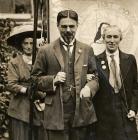 Laurence Housman escorts his sister Clemence Housman to Holloway Prison for her arrest, 29 September 2011. Wikimedia Commons. On Friday, September 29th, 1911, Clemence Housman was arrested for purposefully resisting the payment of taxes. This action was born out of her active participation and creative leadership within suffrage movements. Both Clemence and Laurence, who lived in Kensington, were geographically central to the suffrage movements, and loaned their creative skills to the Women’s Freedom League, through their efforts at their Suffrage Atelier. Clemence, with her considerable sewing skills, was the “chief banner-maker of the suffrage movement,” and collaborated with Laurence on the famous banner bearing the slogan “From Prison to Citizenship.” Clemence’s own tax resistance was part of a larger movement of the Women’s Tax Resistance League (WTRL), which used strategies of civil disobedience to campaign for women’s suffrage. Clemence, who lived with her brother, did not legally have any property on which to pay taxes, so she rented out a house in the rural community of Swanage, where she eluded the census of 2 April 1911. An entry in her diary at this time was “No Vote No Census Clemence Housman.” Along with other WTRL members, Clemence refused to pay taxes on her rental property in 1911, and was admonished in a government letter in July, to which she replied that she was on holiday and unable to pay taxes. Finally, on September 29th, the tax authorities caught up with her, and she was arrested from her Kensington house. The suffrage community gathered at her house to show support, and Laurence himself escorted her to Holloway Prison. Immediately after her incarceration, Clemence petitioned the home office explaining her reason for alluding taxes, that she felt that she had “personally fulfilled a duty, moral, social and constitutional, by refusing to pay petty taxes into irresponsible hands.” At this time, Laurence commented to the press: "when they give her her freedom, she will do it again until representation has been granted." Clemence was released from Holloway quietly on 6 October, an event that attracted considerable press because of the position of her and her family within the artistic and suffrage communities. A special cable to the New York Times called Clemence a "Suffragette Martyr" (Liddington, Vanishing for the Vote; "Suffragette Martyr," The New York Times). |
Emily Hunsberger | ||
| 13 Dec 1913 |
Silent film "The Werewolf" releasedDirected by Henry MacRae, and written by Ruth Ann Baldwin, the film was based on an 1898 short story The Werwolves [sic] by Québécois writer and former mayor of Montréal, Honoré Beaugrand (erroneously cited as Henry Beaugrand). The film is considered lost, as all prints were supposedly either destroyed in a 1924 fire at Universal Studios, or when executives at the studio purposefully destroyed the bulk of their silent picture negatives in 1948. The Werewolf is important for three reasons. First, depending on one’s definition of monster, Phyllis Gordon’s portrayal of the werewolf Watuma makes her cinema’s first monster. Second, the film suggests that Watuma can change herself from woman to wolf just like Clemence Housman’s White Fell in The Were-Wolf. That cinematic standard for changing from human to animal would continue until 1935 when the first wolf/human hybrid make-up was achieved for The Werewolf of London. And finally, The Werwolves, that tale that inspired The Werewolf, is often cited as a staple of werewolf storytelling. Beaugrand’s story not only inspired The White Wolf (1914), but the French film Le Loup Garou (1923), and Wolf Blood: A Tale of the Forest (1925), which is the only one of these early films to survive. |
Soraya Gallant | ||
| circa. 1923 |
Clemence Housman Completes her Last Wood-Engraving CommissionClemence Housman began engraving Frederick Landseer Griggs's architectural drawings of Chipping Campden during World War I and continued the series until 1923, after which she retired from wood engraving. |
Lorraine Janzen Kooistra | ||
| 1924 |
Clemence and Laurence Housman collaborate on “The Were-Wolf,” a film script for a silent movie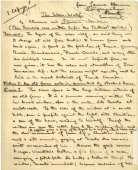 The first page of the hand-written film script to Clemence Housman's "The Were-Wolf", courtesy of the Bryn Mawr Special Collections. Once Clemence and Laurence Housman retired in 1924 to the village of Street, in Somerset, where they had established Longmeadow House. Here they collaborated on a film script based on Clemence’s Were-Wolf story (Kooistra, “Clemence Housman’s The Were-Wolf: Querying Transgression, Seeking Trans/Formation"). After all, The Were-Wolf existed in print and in illustrations, why didn’t it also deserve to be part of this new artistic medium? Adapted for silent films, as “talkies" were only beginning to be commercially possible in the mid- to late-1920s, the script version of The Were-Wolf is even more bleak than the original tale. In the Foreword, written in Laurence’s hand, the siblings describe the appearance of the werewolf in “the folk-lore of France, Germany, Russia, Scandinavia, French Canada,” and other places. The Housmans describe how the film could take place in “the colour and atmosphere of Scandinavian life, but the scenes might actually well be laid in the rural districts of French Canada." The film plot differs slightly from the original story with the introduction of Marta, an established and known lover of Sweyn, whose happiness with him is upset when White Fell appears. Marta balances the scales to offer a young, domestic female figure where before there was only the threat of White Fell and her power. But the same darkness sets over the characters as in Housman’s original tale, and in a gruesome turn, Marta and Sweyn are reunited over Christian’s dead body (Housman script, Bryn Mawr Special Collections). |
Soraya Gallant | ||
| 1924 |
Clemence and Laurence Housman Move to Street, SomersetIn 1924, Clemence and Laurence Housman moved to the house they designed for themselves, Longmeadow, adjacent to the property of their Quaker friends, Roger and Sarah Clark. Here Clemence took up gardening, laying down her engraving tools for trowels and spades. The siblings lived here together until Clemence had to be moved to a nursing home in the 1950s due to failing health. |
Lorraine Janzen Kooistra | ||
| 17 Oct 1928 |
Death of Everard HopkinsEverard Hopkins died on October 17, 1928 (Wood, Victorian Painters). |
Hadia Khan | ||
| 13 May 1935 |
"Werewolf of London" (1935)Debuting in 1935, Werewolf of London is a horror film directed by Stuart Walker, and starring Henry Hull as Wilfred Glendon, the titular werewolf. Dr. Glendon is a wealthy and respected English botanist who is bitten while on an expedition to retrieve the mariphasa lupina lumina in Tibet. Although the plant staves off the effects of lycanthropy, Dr. Glendon is still driven to attack people. Several hunts occur, a second werewolf is revealed, Scotland Yard gets involved, and love is threatened by all before the credits roll (“Werewolf of London”). This is the first film to successfully create what is considered the werewolf “look”: a horrific wolf-human hybrid, rather than someone who transforms from human to wolf. |
Soraya Gallant | ||
| 12 Dec 1941 |
"The Wolf Man" (1941)The Wolf Man (1941) is a werewolf-themed American horror film produced and directed by George Waggner. The Wolf Man features Lon Chaney Jr. in the title role as Larry Talbot, who returns home to Llanwelly, Wales, to seek reconciliation with his father. After Talbot is attacked and bitten, he encounters a fortune-teller who reveals to him that it was her son, transformed into a werewolf, who bit him. Importantly, there is the constant repetition of an ominous poem throughout the film: "Even a man who is pure in heart, and says his prayers by night; |
Soraya Gallant | ||
| 17 May 1946 |
"She-Wolf of London" (1946)She-Wolf of London (alternatively titled Curse of the Allenbys) was released in 1946, directed by Jean Yarbrough and starred June Lockhart and Don Porter, and is another crack at the female werewolf story from the angle of mystery rather than horror. With a title evoking Werewolf of London (1935), the plot concerns Phyllis Allenby (June Lockhart), a young and beautiful woman set to be married to her barrister fiancé (Don Porter). She lives alongside her aunt Martha, cousin Carol, and servant Hannah, Phyllis becomes convinced that she is under the “curse of the Allenbys” as Scotland Yard detectives suspect a “wolf-woman” of being the murderess of several victims whose throats were torn out, and who was seen prowling near Allenby Mansion. |
Soraya Gallant | ||
| 6 Dec 1955 |
Death of Clemence HousmanClemence Housman died in Avalon, a nursing home in Bristol, on December 6, 1955, at the age of 94, after a series of strokes. Laurence had been able to visit her a few days before her death. At the burial of her ashes at Smallcombe cemetery, she received a full Church of England service. (Oakley, Inseparable Siblings) |
Lorraine Janzen Kooistra | ||
| 20 Feb 1959 |
Death of Laurence Housman Friends' House, Street, © Copyright Patrick Mackie and licensed for reuse under creativecommons.org/licenses/by-sa/2.0 Laurence Housman died on February 20, 1959 at Butleigh Hospital in Glastonbury, England. He had regarded himself as "the last Victorian." He was buried in the Quaker graveyard at Street, having become a member of the Society of Friends in 1951 (Oakley, Inseparable Siblings). |
Hayley Horvath |

